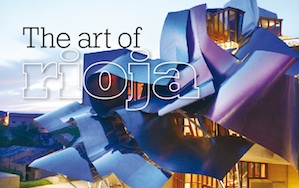The cynical among us have questioned Pernod’s intentions for taking crianza off the bottle – what’s to stop it from putting crianza and 100% Tempranillo on there, for example? Well, in a word, the consumer. It’s easy to forget when you’re in the trade that some people think Rioja is a grape variety. Understanding words such as crianza might be a bridge too far for your average Jo(e).
Of course there is another reason – the wine is no longer aged to crianza rules.
Adrian Atkinson, wine development director, Pernod Ricard UK, says: “To create a more fruit-forward expression of Rioja this wine is aged for four months, whereas a crianza is aged for at least 12 months. This more subtle ageing delivers a balanced taste between oak and fruit – creating an approachable, yet quintessentially classic Rioja style.”
The blend has also changed – previously it was 85% Tempranillo/20% Garnacha/5% Mazuelo. The wine was launched in the UK in April and is set to roll out in all export markets “in the coming months”. The UK rrp is £8.55. At the time of going to press, the Campo Viejo crianza was on Sainsbury’s website for £8.29.
Challenging pricing
Not everyone is looking to the younger end of the market for success. Faustino, which claims to have the number one gran reserva Rioja worldwide, says that in the UK the brand is showing strong growth in the £10+ category – a challenging price point in the current economic climate. The brand grew despite seeing overall decline in gran reserva sales. According to Lisa Duckenfield from UK distributor Cellar Trends, in 2011 one in five gran reservas sold in the UK was Faustino.
The thirst for more complex, aged wines runs alongside a thirst for different styles of wine and grape varieties. There are many grape varieties authorised by the DOCa. They are (red): Tempranillo, Garnacha (Grenache), Graciano, Mazuelo and Maturana Tinta; amd (white): Viura, Malvasía, Garnacha Blanca, Tempranillo Blanco, Maturana Blanca, Turruntés, Chardonnay, Sauvignon Blanc and Verdejo.
Some believe the region’s opportunities lie in the variety of styles it can offer as well as in the reinvigoration of more traditional varieties.
Adam Marshall, commercial director at Bottle Green, distributor of Baron de Ley in the UK, says: “With a continual focus on quality and a modern, intense, style, Baron de Ley has built terrific loyalty from consumers. At the same time, innovation – such as the recently released Varietales ranges, featuring the lesser-known grapes of Rioja, plus a fantastic new premium white Rioja (3 Vinas) – continues to excite consumers’ taste buds.
“The Consejo does a great job but by it’s very nature it has to appeal to a broad spread of producers and consumers. Innovative, market leading companies such as Baron de Ley can focus and drive relevant messages to the end consumer in an arguably more exciting way.”
His colleague Nick Butler, winemaker and director, says the challenge for the region is keeping the message fresh and engaging. He also suggests that major international grape varieties such as Sauvignon Blanc could boost the popularity of the region.
“The opportunities lie in the fact that the regional body is being progressive – this creates opportunities to relaunch old varieties, such as Maturana and Graciano, and introduce new varieties such as Sauvignon Blanc and Verdejo. The best way for Spain to create a mainstream white wine would be to launch a Verdejo/Sauvignon Blanc from Rioja.”




